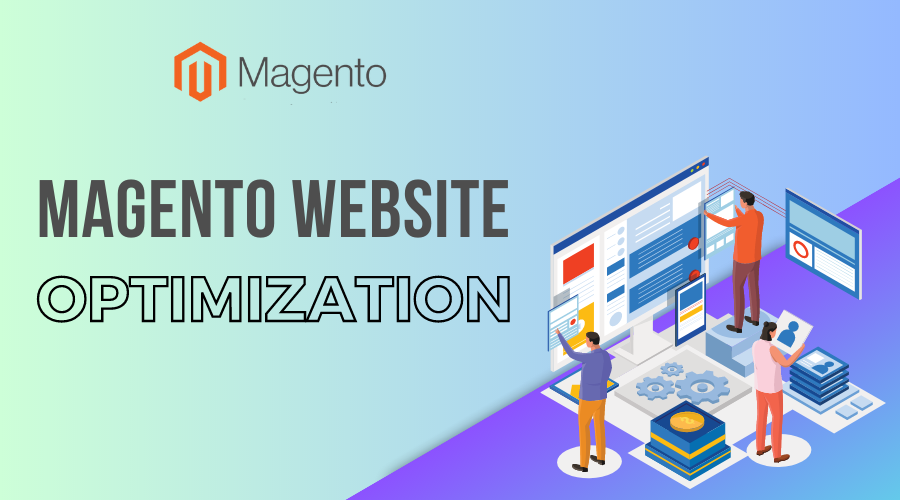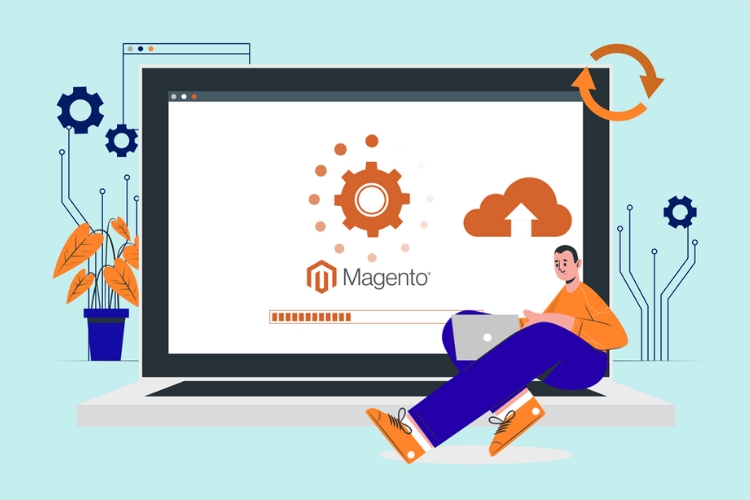
The internet has become an essential part of our lives, offering convenience and accessibility for various activities such as browsing, studying and even shopping. Online stores have flourished and are now generating significant profits as compared to physical stores. Optimized online stores provide customers with a range of features, including product comparisons, reviews, a variety of options, pricing details, and discounts etc. These features enhance the buying experience for customers and contribute to the profitability of brands when implemented effectively.
Among the many content management systems (CMS) available for eCommerce websites, Magento stands out as one of the most preferred choices. Its popularity among brands and developers can be attributed to its Website Optimization tools and techniques that focus on site speed. These features and tools allow brands to optimize their online stores for better performance and user experience.
Withour further ado, let’s explore top 6 efficient Magento website optimization tools and techniques to unlock all potentials of your online business!
Table of Contents
I. Magento Website Optimization Techniques
Magento optimization techniques are important for various reasons, including enhancing user experience, lowering bounce rates, improving SEO performance, and driving increased sales, among other benefits.
Let’s delve into the six highly popular Magento Website Optimization techniques commonly employed by Magento eCommerce development service experts
1.1. Choose reliable hosting
The hosting provider plays a very important role in the performance of a Magento store. It is quintessential that businesses opt for hosting providers that offer fast servers and also have a good track record of uptime. A reliable hosting provider ensures that stores remain accessible and responsive to customers round the clock.
1.2. Update to the latest Magento version

Magento regularly releases updates and patches that include performance improvements. Working with the latest upgrade ensures that stores are powered by the latest version which comes with optimized code, bug fixes, improved caching mechanisms and enhanced Magento site speed. However, upgrading by yourself may cause several issues afterward. So, the better choice is going with an expert Magento agency to upgrade your Magento website to the latest version.
Read more: Magento Latest Version – Comprehensive Guide To Upgrade Magento 2.3 To 2.4 With Ease
1.3. Use a content delivery network (CDN)
A CDN helps accelerate the delivery of store content by caching static files (e.g., images, CSS, JavaScript) closer to the visitors. Integrating a CDN helps distribute website content across multiple servers globally, reducing latency and improving page load times for visitors from different locations, thereby improving performance.
1.4. Optimize images
Another technique of Magento website optimization is through optimizing images. Optimizing images is essential for reducing their file size without compromising on quality. This can be done by compressing images, converting them to more efficient formats (e.g., WebP), and utilizing lazy loading techniques. Optimized images contribute to faster page load times and a better user experience.
1.5. Use caching
Caching can help to improve the performance of the store by storing frequently accessed pages in the cache memory, such as Redis or Varnish. When a user requests a cached page, it can be served directly from the cache, avoiding the need to process the request again. This can reduce the number of times that your server needs to be accessed, resulting in faster page load times.
1.6. Minification and Bundling
Minification and bundling are two important techniques for optimizing the performance of Magento 2 websites. Magento uses various CSS and JavaScript files to render web pages. Minification reduces the size of JavaScript and CSS files by removing unnecessary whitespace, comments, and other non-essential characters.
Bundling combines multiple JavaScript and CSS files into a single file, which helps reduce the number of HTTP requests that need to be made by the browser. Magento has built-in options for minification and bundling in its configuration settings, which can be enabled to improve website performance.
II. Magento Website Optimization Tools
Using Magento optimization tools is essential for enhancing the performance and speed of e-commerce websites built on the Magento platform. These tools improve the user experience, increase search engine rankings, and boost conversion rates.
2.1. PHPStorm

A Magento Development Tool that finds its application in big Magento Projects. It offers advanced code editing features, such as intelligent code completion, debugging, version control integration, and a powerful editor for Magento XML configuration files.
2.2. Xdebug
Xdebug is a popular debugging and profiling tool for PHP applications.It allows you to check your code line by line, inspect variables, and set breakpoints.It is a powerful magento tool for finding and fixing bugs in your Magento code.
2.3. MageTool
MageTool is a command-line tool that automates many of the tasks involved in Magento development. MageTool simplifies the process of migrating to the Magento admin and MySQL tools, allowing developers to seamlessly transition between different tasks. This can save you a lot of time and effort, especially when working on large projects.
2.4. New Relic
New Relic is a widely used Magento tool that proves invaluable for enhancing the performance of your Magento store. This platform offers a range of beneficial features, including transaction traces, error detection capabilities, and also APM Insights that provides a comprehensive overview of your store’s performance such as response time, throughput, and availability.
2.5. Magento Cloud Commerce

Magento Commerce Cloud by Adobe, is a cloud-based hosting and deployment platform. It provides a secure and scalable platform for creating and managing Magento stores. Magento cloud commerce has an array of features, such as automatic scaling, staging environments, and continuous integration/continuous deployment (CI/CD) workflows that optimizes the development process and facilitates seamless collaboration among team members.
2.6. Magento PHPUnit Integration
Magento PHPUnit integration simplifies the process of thoroughly testing code and various scenarios, ensuring the quality of the codebase. This integration offers several advantages, such as evaluating code quality, identifying and resolving module issues, and establishing a seamless connection between Magento and PHPUnit.
These magento website optimization tools provide insights into key metrics like response times, database queries, and resource usage. With this information, you can identify bottlenecks and areas for improvement, reduce page load times and server resource consumption. This results in cost savings and improved server efficiency, allowing you to fine-tune your store’s performance.
Ultimately, when armed with the right tools and techniques, it is possible to effectively improve customers’ online shopping experience, drive higher sales and foster business growth.
III. Conclusion
In conclusion, 2025 presents an exciting array of cutting-edge Magento website optimization tools and techniques that can propel your e-commerce store to new heights. Remember, the key to successful optimization lies in a holistic approach.
While each tool and technique offers specific benefits, the true power emerges when you combine them strategically to address different aspects of your website’s performance. Regular monitoring and analysis are essential to identify areas for improvement and to adapt to the evolving needs of your customers.
As technology continues to advance, staying informed about the latest trends and innovations in the e-commerce industry is vital. Be open to exploring new tools and techniques that emerge, and be proactive in embracing change to stay ahead of the competition.












![[SALE OFF] Discount 30% All Premium Extensions On Christmas And New Year 2025 christmas-and-new-year-2025](https://landofcoder.b-cdn.net/wp-content/uploads/2024/12/christmas-and-new-year-2025-1-218x150.png)






